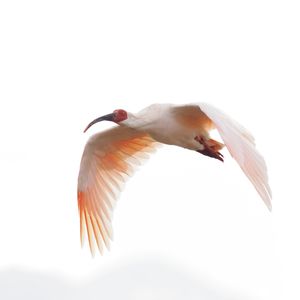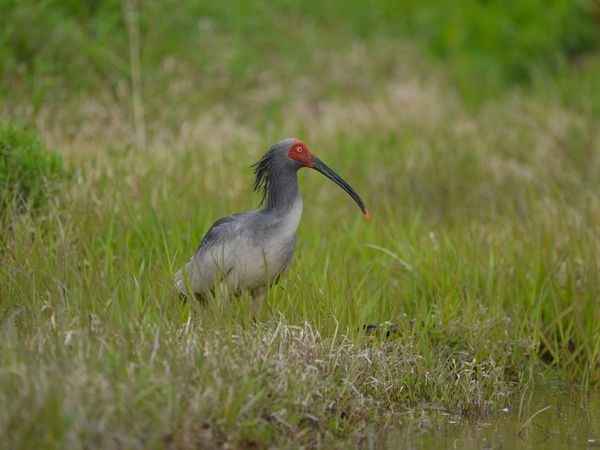 LINKED PAPER
LINKED PAPER
Evaluation of ongoing Crested Ibis (Nipponia nippon) reintroduction using an integrated population model and bayesian population viability analysis. Okahisa, Y. & Nagata, H. 2022 Ibis. doi: 10.1111/ibi.13071 VIEW
Reintroduction has become a widely used technique for the restoration of species that have become extinct within their indigenous range to re-establish self-sustaining populations. To determine whether a reintroduced population will reach a self-sustaining status, it is essential to accurately assess the demographic parameters, including survival rate, reproductive success, and the IUCN Red List criteria, as well as population viability and size (Seddon 2015; IUCN 2012). However, acquiring data on all indicators and estimating criteria according to IUCN definitions can be challenging.
To show a comprehensive case study of the evaluation of an ongoing reintroduction programme and propose an evaluation method widely applicable to other programmes. We focused on the ongoing reintroduction programme of the Crested Ibis Nipponia nippon on Sado Island, Japan. Despite conservation efforts since the 1920s, the Japanese Crested Ibis became extinct in 2003. After local extinction, a reintroduction programme began in 1999 with five founder individuals from China. From 2008 to 2021, 415 Crested Ibises were released into the wild, and around 30 ibises have been released each year since.

Figure 1 Crested Ibis Nipponia nippon standing on the ridge of a paddy field.
What did we do?
We developed an integrated population model and population viability analysis framework integrated roost count and mark-resight data for 415 released and 203 wild-hatched individuals, as well as reproductive performance for a total of 575 pairs. These data were collected by the Toki Monitoring Team including authors, which has conducted surveys for 13 years following the first release of the Crested Ibis, along with information collected by many citizens from Sado City. We aimed to assess survival, reproductive success, population size, number of mature individuals, and population projection.
The Population is becoming self-sustaining!
In the first year after release, the estimated apparent annual survival rate of the ibis was 0.566 (Bayesian credible intervals (CRI) 0.518, 0.614); however, this rate increased after one year (0.865; CRI 0.836, 0.892). Wild-hatched juveniles exhibited a high survival rate (0.757; CRI 0.670, 0.838) that was just lower than that of adults (0.899; CRI 0.844, 0.949). The reproductive success rate varied with pair attributes (released–released pair: 0.245, CRI 0.194, 0.299; released–wild pair: 0.377, CRI 0.281, 0.471; wild–wild pair: 0.350, CRI 0.237, 0.471). These estimates were lower than those reported for wild populations in China (0.525, Wang et al. 2017).
Total population size continuously increased and reached 457 individuals (CRI 384, 525), with 261 mature individuals (CRI 211, 304) in June 2021. The probability of Crested Ibis extinction in the next five generations was 0%. However, negative density effects were detected, and the population size was projected to be 588 (median; CRI 329, 1020) with additional releases for the next three generations.

Figure 2 Population size from an integrated population model and Bayesian population viability analysis of the reintroduced Crested Ibis population on Sado Island, measured every June from 2008 to 2021. Posterior means and 95% Bayesian credible intervals for (a) class-specific number of individuals, and posterior medians and 95% Bayesian credible intervals of (b) population size from Bayesian population viability analysis are shown.
Overall, our model showed that although the reproductive success of the Crested Ibis is low, its population and number of mature individuals are increasing due to high survival rate, and the model showed no extinction probability in the short term. Thus, we consider that the Crested Ibis is successfully reintroduced and finally becoming a self-sustaining population with 100 years of continuous local conservation efforts! The framework demonstrated here enhances the comprehensive assessment of the ongoing reintroduction program according to the relevant definitions and accounts for uncertainty for all demographic parameters. The integrated framework could serve as a guide for decision-making in other reintroduction programmes.
References
IUCN. 2012. IUCN Red List categories and criteria, version 3.1. 2nd edn. Gland, Switzerland & Cambridge, UK: IUCN Species Survival Commission. VIEW
Seddon, P. J. 2015. Using the IUCN Red List criteria to assess reintroduction success. Animal Conservation 18: 407-408. VIEW
Wang, M., Ye, X.P., Li, Y.F., Huo, Z.P., Li, X. & Yu, X.P. 2017. COn the sustainability of a reintroduced Crested Ibis population in Qinling Mountains, Shaanxi, Central China. Restoration Ecology 25: 261-268. VIEW
Image credit
Top right: Crested Ibis Nipponia nippon © Yuji Okahisa.
If you want to write about your research in #theBOUblog, then please see here.



